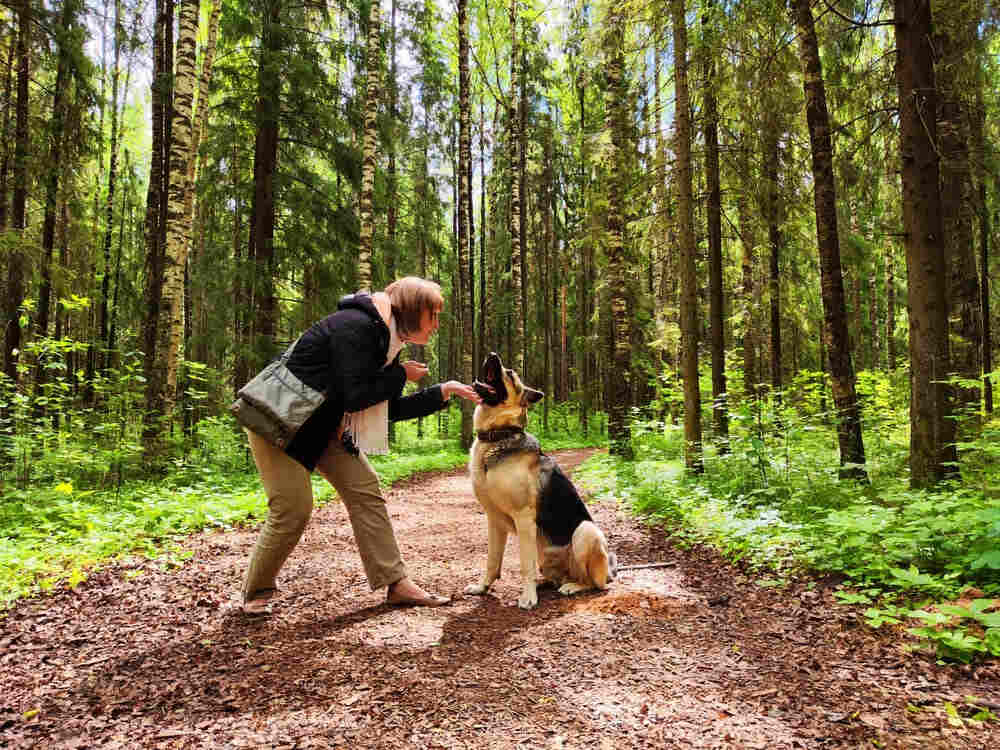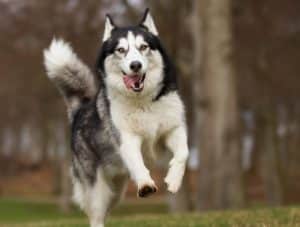Problem solving and Behaviour Modification Techniques. – Any owner of any dog can develop behavior problems sooner or later.
Those dog owners who understand the reasons for a particular behavior pattern cope quickly and effectively with problematic situations. So, here let’s know some behavior modification and problem solving technique.
Absolutely! Here’s a breakdown of your text on problem-solving techniques, along with key takeaways and some considerations for owners.
Key Takeaways
- Understand the Root Cause: Effective behavior modification starts with identifying why the unwanted behavior is occurring. Don’t just try to stamp out symptoms; address the underlying reason.
- Aggression is Complex: Aggression in dogs has many potential triggers (fear, dominance, pain, etc.). Accurate diagnosis is crucial for choosing the appropriate approach to resolving it.
- Seek Help When Needed: Don’t hesitate to consult a dog behaviorist for severe or ingrained behavioral issues. They provide invaluable support for both you and your pet.
- Training is Ongoing: Problem-solving techniques aren’t just about fixing what’s “wrong.” Consistent training and positive reinforcement strengthen good behaviors, preventing future problems.
Types of Problem Behaviors & Potential Causes
Your text provides a great overview of common behavioral challenges:
- Dominance: Stems from unclear hierarchy in the home. Needs firm, consistent leadership from the owner.
- Territorial: Instinctive, but must be managed for safety. May be directed at people or other animals.
- Aggression: A complex issue with several potential types:
- Intraspecific (towards other dogs)
- Possessive (guarding resources)
- Fear or pain-based
- Predatory
- Defensive: Self-protective response, can become indiscriminate if left unchecked.
Behavior Modification Techniques
The right technique depends entirely on the type of behavior you’re addressing. Remember these important points:
- Avoid Punishment-Focused Methods: They may suppress the outward behavior but worsen the underlying fear or anxiety, often making the problem resurface.
- Focus on Positive Reinforcement: Reward the behaviors you want to see, building a foundation of trust and good associations.
- Counterconditioning: Pair triggers for negative behavior with positive experiences to reshape your dog’s emotional response.
- Management: Create a safe environment for your dog while addressing the root behavior. Muzzles, leashes, or barriers can prevent problems during the training process.
Important Considerations for Owners
- Rule Out Medical Causes: Before assuming a behavior is purely behavioral, have your vet rule out any underlying health issues that may be contributing.
- Be Patient & Realistic: Behavior modification takes time and consistency. Don’t be discouraged by setbacks.
- Your Own Emotions Matter: If you’re frustrated, anxious, or angry, your dog picks up on it. Stay calm and positive for best results.
Techniques Of Problem Solving and Behavior Modification:
Unlike a general training course, dog tricks are not mandatory. They are purely for fun and strengthening relationships. Feeling the joy and delight of those around them, pets begin to try even harder. This is why many breeds perform in the circus.
Most of the interesting commands require knowledge of the basic ones. It is extremely difficult and even impossible to do something difficult without knowing how to stand up, sit down, or lie down on the orders of the owner. For this reason, it is best to start training around 4-6 months, when all the basics have been learned. So, see some problem-solving technique.
Dominant Behavioral Therapy:
A dominant pet can cause many issues for owners. Such pets often show disobedience, attack other dogs for no reason, and behave aggressively towards other people, especially small children. Pronounced dominant manners must be nipped in the bud, preferably during puppyhood.
If the moment was missed, and the dog came to the owners as an adult, then you will have to go through a long and difficult path to correct this type of manners.
Dominant aggression appears as a result of improper upbringing and the wrong approach. Dogs prefer to live in packs, where they have a strict hierarchy.
If a pet gets into a house, the owner becomes its leader. If the owner could not or did not want to build the correct model of manners, the dog begins to put himself above the household and display dominant manners. Very often it is accompanied by aggression and unwillingness to obey simple rules.
A puppy can be raised playfully, the main thing is to immediately show who is in charge in the duet of pet and owner.
Territorial Behavior Therapy:
The dog is a social animal, so it is characterized by territorial manners. Free-living dogs often divide entire areas between packs. Aggression can be directed at humans or other pets. The dog may not allow you to approach its kennel or bed and guard its food bowl.
This manner also manifests itself in negative manners towards guests. The pet may bark loudly at people passing by the apartment, even if they are not trying to enter the home.
It is impossible to completely get rid of territorial aggression, but it is possible to correct the severity. Owners should keep an eye on the dog when guests arrive; it is advisable to use a leash, muzzle, and collar outside.
Aggression in Dogs:
In same-sex pets, aggression towards other members of the group is common. A dog may behave badly towards other dogs if he feels uneasy and unsteady in his place in the hierarchy.
It’s important to correctly diagnose the issue and distinguish intraspecific aggressiveness from territorial aggression before attempting to improve manners.
Intraspecific aggression can even manifest itself towards animals that have lived under the same roof with a particular pet for a long time. If the dogs are of the same age and build, the situation may get worse. The more similarities between animals, the higher the likelihood of competition.
For male dogs, castration of the pet often solve problems. The problem cannot be left to chance; it is necessary to teach dogs peaceful manners and be sure to reward any success. Feuding pets should not be left alone indoors without supervision.
Possessive Aggression Behavioral Therapy:
The pet shows possessive aggression when someone tries to lay claim to his things. These could be toys, teethers, personal items, a bed, or treats. If timely measures are not taken, such negative manners can develop into pronounced food and territorial aggression.
If several pets live in the house, the owner will begin to try to control the territory and use of things, which will lead to fights between relatives.
Such displays of emotion should be stopped immediately. It is important to show your pet that people around him and other pets are not always hostile and do not try to take away his items.
Driven by Fear and Pain Behavior Change:
Such detectable attacks are among the most common among dogs. Pets often end up with irresponsible owners who try to raise the animal through constant physical retribution and various deprivations.
The animal may also react aggressively to veterinarians if the dog has to go through lengthy and painful procedures. Aggression caused by fear and pain can manifest itself not only in people. A pet may also react negatively to its relatives if it has previously had unsuccessful experiences in building hierarchical relationships.
Correcting such manners is quite difficult; it is a labor-intensive process that can take from 2 to 8 months. It all depends on how long ago the pattern was formed and how much the pet is immersed in fear. It is important to support your dog in stressful situations, stay nearby during veterinary procedures and, if possible, give pain relief.
Predatory Psychology:
Similar behavior manifests itself during hunting and pursuit of prey: small animals of other species, birds. This is interspecies aggression that only affects members of other species.
It can manifest itself in the following factors:
- Chasing small prey during long walks;
- Manifestation of the chase reflex, chasing a shadow;
- The most severe manifestation is killing aggression, it can spread to relatives; such dogs are extremely aggressive and enjoy brutal reprisals.
Individuals with murderous aggression cannot be trained; they have a serious mental disorder. Such dogs are usually euthanized; they pose a danger to others.
Defensive Reaction:
Defensive aggression can occur when a pet guards its territory, personal belongings, or owners. If the dog begins to react negatively to even the slightest stimuli, then it is necessary to correct its manners.
Manifestations of aggression must be stopped immediately, while simultaneously praising the dog for obedience and positive changes. If you do not react in time, specific protection will develop into an established pattern, which will be extremely difficult to get rid of.
Training Aggressive Dogs:
The first step in training is to determine the cause of the negative manners. It is extremely important to accurately establish the cause and make sure that this particular factor is an irritant for the pet. After this, you can take the dog to a dog handler or begin to correct the manners yourself.
There are some useful tips to follow:
- Signs of aggression cannot be ignored, even if they have not been observed before and it seems as if this is a one-time incident;
- Ignoring the problem will bring fear into the life of the owners, and the animal will become unpredictable and dangerous;
- You cannot punish, scold, or beat for inappropriate manners: this will make the pet even more aggressive and embittered;
- If home methods fail to correct the manners, you should contact a dog handler; a specialist will help you figure out the root causes and get rid of it forever;
- Dog handlers also always give useful advice and recommendations and can teach owners several techniques and important aptitudes.
Conclusion:
Training and proper upbringing greatly facilitate the animal’s communication with other people and relatives. Therefore, when the first signs of aggressive manners appear, it is necessary to immediately begin to correct the situation. Choose the right equipment for walking and training. In our selection, you can see some suitable products for this.
“Understanding the nuances of effective training techniques is essential for any learning process, be it for humans or animals. In the realm of pet care, Dog Training (Course) is particularly vital as it not only shapes obedient behavior but also fosters a bond between the pet and its owner. It offers an extensive course that is cost-effective, with the entire course priced at just the equivalent of what a dog trainer might charge for a single hour ($40 to $120). It covers a wide array of behaviours including Potty Training, Lunging, Jumping, Digging, Whining, Chewing, Excessive Barking, Impulse Control, Hyperactivity, Ignoring Commands, and much more. Plus, they provide a 100% money-back guarantee if you cancel within 60 days, ensuring that your investment is risk-free.”








